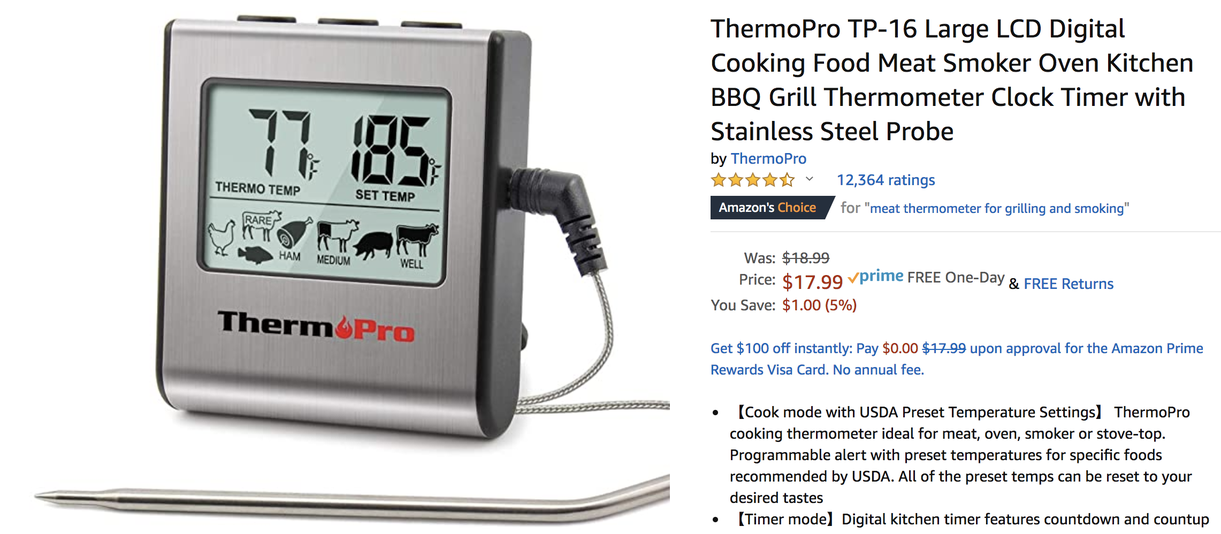⚡ Mashable Score
4.25
Cooking a meal, in many ways, is like any other project: You can’t do the job right if you don’t have the tools.
As a relatively skilled home-cook though, I’m kind of allergic to kitchen gadgetry. I’m suspicious of tools that promise ease or claim to perfect one kitchen task. I’m sooner to praise a stalwart tool that does many things well — a good Dutch oven, a large cast-iron pan, hell, even well-designed tongs — than a doohickey you’d spot on an infomercial or Instagram ad.
All that said, there is one ridiculously simple gadget I think most home cooks need: a reliable, instant-read thermometer to make sure you’re cooking your food to the desired temperature. .
If you’re a real chef, you probably don’t need a digital meat thermometer. You can touch a steak, look at a salmon filet, or just know when a chicken thigh is properly cooked. For the rest of us, however, a good thermometer eliminates guesswork. It removes a variable from the cooking process and, frankly, provides a bit of comfort (if you’re new to this cooking thing) that you’re not going to sicken folks with undercooked meats.
The problem is, a good meat thermometer that accurately delivers the temperature is hard to find. I’ve cycled through a bunch and they’ve all suffered from similar issues. Most thermometers read way too slowly and you’re forced to stand over the cooking vessel — even, perhaps, removing the meat from the heat — while the number slowly climbs. In my experience, this problem gets worse with time because most thermometers don’t seem to handle cleaning well. And, finally, many thermometers feel cheap and flimsy — I’ve had the display cover fall off multiple purchases. To be clear, I only buy cheap thermometers. My reasoning behind that is simple: it’s a freaking thermometer and it feels silly to pay more than a few bucks.
With all that said, I’ve finally found a meat thermometer brand that has mostly solved those issues: ThermPro.
Specifically, I got an instant-read probe and stainless steel thermometer that has a heat-proof cord, which allows you to leave the probe in a piece of meat in the oven/smoker/grill.
The instant-read probe costs just $13.99. The thermometer with a cord costs $17.99. They’re both well worth the cost.

The corded ThermPro.
Let’s state the obvious. These are not sexy purchases. They are wildly practical.
If you’re not cooking with a good thermometer, you’re missing out. The two ThermPro thermometers give fast, accurate readings. You’ll see what temperature your meat is within a couple of seconds. They’re sturdy — the probe is (apparently) waterproof, and while I haven’t intentionally soaked it, I do wash it without issue. Both thermometers give clear readings and aren’t weighed down by complicated functions.

The probe ThermPro meat thermometer.
The probe does two things: the screen lights up (to make it easier to read while grilling at night) and gives you a temperature. The oven thermometer has a couple of extra features. It has a timer that will go off when your meat hits the desired temperature and if you need help choosing the right temperature, it has programmed temps for every kind of meat. You can program your hunk of beef to medium, for instance, and let the thermometer do its thing. I can also safely read temps up to 572 degrees Fahrenheit, meaning you could use it to measure fryer oil in a pinch. Both thermometers are magnetized on the back, which can be helpful if you want to slap it on the side of a grill or oven.
There are a few drawbacks to the ThermPros. I’ve found with my instant-read probe, for instance, it’s best to fully insert the thermometer’s tip through the side of a piece of meat to get an accurate reading. If you just prod from the top, it can sometimes give a wonky reading because it isn’t submerged fully. I also broke my original wired thermometer because I accidentally left it outside in the rain all night… but frankly, that’s on me.

Steak!
Image: Tim Marcin / Mashable
A nice little side effect is that a good thermometer helps you become a better cook. You start to learn what a medium steak, or a finished piece of salmon look and feel like. I still need the thermometer but I don’t have to check it all the time. Here is a flank steak I grilled to about medium, thanks, in part, to my meat thermometer.
With the pandemic still gripping the U.S. and the world at large, it’s likely you’re cooking now more than ever. I get that a good meat thermometer isn’t really a cool cooking purchase but it’s one you’ll appreciate nearly every time you use it. It’ll make your life easier and is well worth a pricetag safely under 20 bucks.
